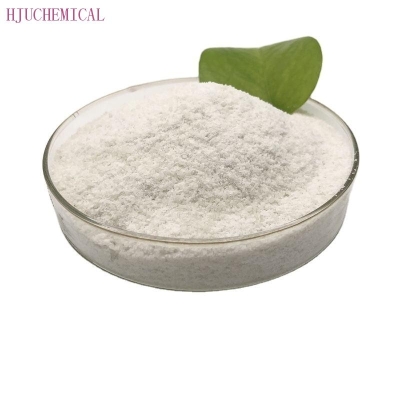-
Categories
-
Pharmaceutical Intermediates
-
Active Pharmaceutical Ingredients
-
Food Additives
- Industrial Coatings
- Agrochemicals
- Dyes and Pigments
- Surfactant
- Flavors and Fragrances
- Chemical Reagents
- Catalyst and Auxiliary
- Natural Products
- Inorganic Chemistry
-
Organic Chemistry
-
Biochemical Engineering
- Analytical Chemistry
- Cosmetic Ingredient
-
Pharmaceutical Intermediates
Promotion
ECHEMI Mall
Wholesale
Weekly Price
Exhibition
News
-
Trade Service
Reference source: Ningbo Institute of Materials Technology and Engineering, Chinese Academy of Sciences?? The extensive application of lithium-ion batteries in life has greatly improved people's quality of life
.
However, due to the use of flammable organic liquid electrolytes, traditional lithium-ion batteries have safety risks and energy density is also limited
.
The use of solid electrolytes instead of organic liquid electrolytes to develop all-solid-state batteries is expected to solve these problems, and oxide solid electrolytes are an important research direction
.
? Oxide solid electrolytes, including perovskite solid electrolytes, sodium superion (NASICON) solid electrolytes and garnet solid electrolytes (Li7La3Zr2O12, LLZO)
.
Among them, the garnet-type solid electrolyte lithium lanthanum zirconium oxide (LLZO) exhibits excellent electrochemical and chemical properties, and has great development prospects in the development and application of new energy equipment, and has become a research hotspot in recent years
.
? Recently, Ningbo Institute of Materials Technology and Engineering, Chinese Academy of Sciences has made progress in the study of ion migration mechanism of LLZO composite solid electrolyte
.
Shen Cai, associate researcher of the Power Lithium Battery Engineering Laboratory of the Institute, used lithium lanthanum zirconium oxide (LLZO) inorganic solid particles and polyethylene oxide (PEO) polymer matrix to prepare different LLZO contents (0 wt.
%, 50 wt.
%, 75 wt.
%) LLZO-PEO composite solid electrolyte; using a peak force conduction atomic force microscope, the effects of temperature and LLZO content on the ion migration in the composite solid electrolyte were studied
.
? Studies have shown that when the temperature is lower than the glass transition point (Tg) of PEO, the PEO matrix is in a chain-like crystalline state, and the addition of LLZO particles makes the PEO amorphous region formed at the interface between LLZO and PEO, thereby reducing The crystallinity and glass transition temperature of PEO
.
The researchers combined with the micro-area quantitative nanomechanics measurement technology and found that as the temperature increases, the Young's modulus of the electrolyte decreases and the adhesion force increases..
When the temperature is lower than the glass transition temperature Tg, regardless of the LLZO content, lithium ions can only migrate along the amorphous PEO; when the temperature is higher than Tg, when a small amount of LLZO particles are added, the lithium ions mainly follow the amorphous PEO As the LLZO content (75 wt.
%) increases, LLZO particles form a continuous ion conductive network in the PEO matrix, and lithium ions can migrate through the LLZO particles at high temperatures
.
In the prepared electrolyte, the ion migration current is three orders of magnitude higher than the electron current, which is dominant
.
Among them, the electronic current in the PEO region is much larger than that of the LLZO particles, indicating that the addition of LLZO particles can improve the electronic insulation performance of the composite electrolyte
.
Because LLZO has a higher modulus and excellent insulation properties, the addition of LLZO particles is expected to inhibit the growth of lithium dendrites in the metal lithium negative electrode
.
? The research intuitively reveals the influence of inorganic filler content and working temperature on the performance of composite solid electrolytes under the glass transition state of organic solid electrolytes, and has important guiding significance for the design and development of solid electrolytes for lithium-ion batteries
.
.
However, due to the use of flammable organic liquid electrolytes, traditional lithium-ion batteries have safety risks and energy density is also limited
.
The use of solid electrolytes instead of organic liquid electrolytes to develop all-solid-state batteries is expected to solve these problems, and oxide solid electrolytes are an important research direction
.
? Oxide solid electrolytes, including perovskite solid electrolytes, sodium superion (NASICON) solid electrolytes and garnet solid electrolytes (Li7La3Zr2O12, LLZO)
.
Among them, the garnet-type solid electrolyte lithium lanthanum zirconium oxide (LLZO) exhibits excellent electrochemical and chemical properties, and has great development prospects in the development and application of new energy equipment, and has become a research hotspot in recent years
.
? Recently, Ningbo Institute of Materials Technology and Engineering, Chinese Academy of Sciences has made progress in the study of ion migration mechanism of LLZO composite solid electrolyte
.
Shen Cai, associate researcher of the Power Lithium Battery Engineering Laboratory of the Institute, used lithium lanthanum zirconium oxide (LLZO) inorganic solid particles and polyethylene oxide (PEO) polymer matrix to prepare different LLZO contents (0 wt.
%, 50 wt.
%, 75 wt.
%) LLZO-PEO composite solid electrolyte; using a peak force conduction atomic force microscope, the effects of temperature and LLZO content on the ion migration in the composite solid electrolyte were studied
.
? Studies have shown that when the temperature is lower than the glass transition point (Tg) of PEO, the PEO matrix is in a chain-like crystalline state, and the addition of LLZO particles makes the PEO amorphous region formed at the interface between LLZO and PEO, thereby reducing The crystallinity and glass transition temperature of PEO
.
The researchers combined with the micro-area quantitative nanomechanics measurement technology and found that as the temperature increases, the Young's modulus of the electrolyte decreases and the adhesion force increases..
When the temperature is lower than the glass transition temperature Tg, regardless of the LLZO content, lithium ions can only migrate along the amorphous PEO; when the temperature is higher than Tg, when a small amount of LLZO particles are added, the lithium ions mainly follow the amorphous PEO As the LLZO content (75 wt.
%) increases, LLZO particles form a continuous ion conductive network in the PEO matrix, and lithium ions can migrate through the LLZO particles at high temperatures
.
In the prepared electrolyte, the ion migration current is three orders of magnitude higher than the electron current, which is dominant
.
Among them, the electronic current in the PEO region is much larger than that of the LLZO particles, indicating that the addition of LLZO particles can improve the electronic insulation performance of the composite electrolyte
.
Because LLZO has a higher modulus and excellent insulation properties, the addition of LLZO particles is expected to inhibit the growth of lithium dendrites in the metal lithium negative electrode
.
? The research intuitively reveals the influence of inorganic filler content and working temperature on the performance of composite solid electrolytes under the glass transition state of organic solid electrolytes, and has important guiding significance for the design and development of solid electrolytes for lithium-ion batteries
.







